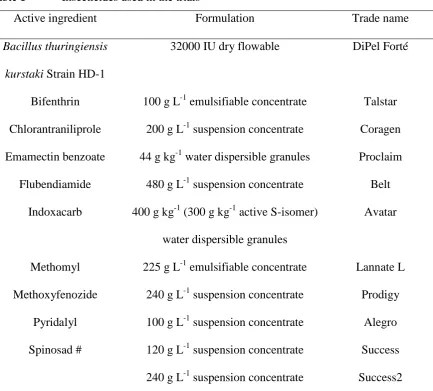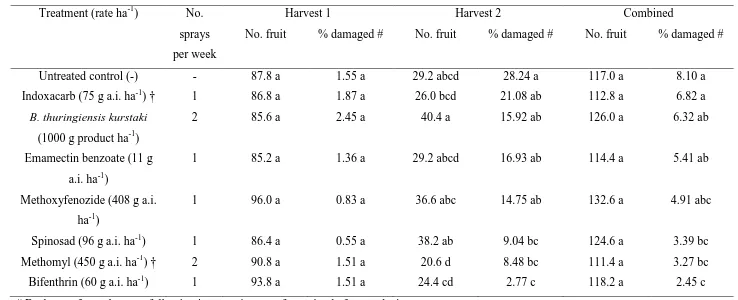Evaluating the efficacy of insecticides to control Sceliodes cordalis (Doubleday) (Lepidoptera: Crambidae) in eggplant
Full text
Figure




Related documents
A volcanic eruption against their oppressors in 1855- 56 (moneylenders and landlords and also against the negligence of the British Government of pre- independent
In this paper, genetic programming is used for finding optimal trading strategies based on technical indicators and news.. An example of a trading strategy that may
Environmental concerns with phosphorus (P) have forced the animal industry to re-evaluate the levels formulated in diets. It has been demonstrated in nu- merous
To determine the most effective flushing locations, the staff simulates contamination incidents from each possible contamination source location using the TSG produced from
Functional constipation is a very common problem amongst children, and is associated with abdominal pain, soiling, faecal impaction, poor appetite, stool withholding and overflow
ovatum yielded triacylglycerols ( 5 ); the mesocarp also afforded 1a , 1b , 1,2-dioleylglycerol ( 6 ), and monounsaturated and saturated fatty acids; the nutshell
The purpose of the study was to determine the cost and cost effectiveness of health facility and community based directly observed treatment of tuberculosis in an urban setting
This study examined the extent to which smokers in China perceive risks associated with smoking (i.e., perceived likelihood of getting a smoking-related disease) and the roles
